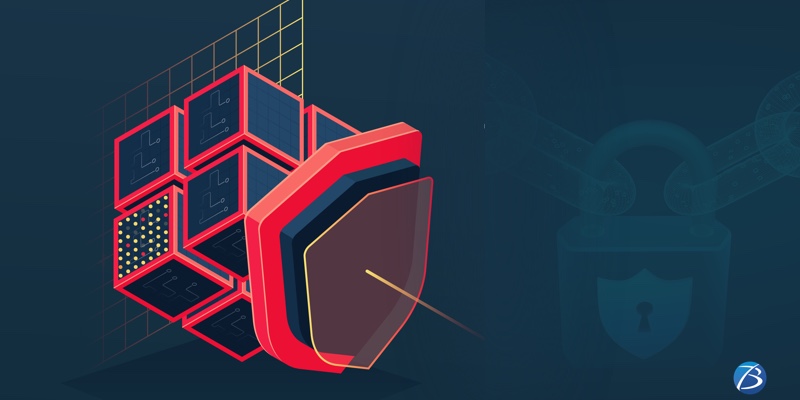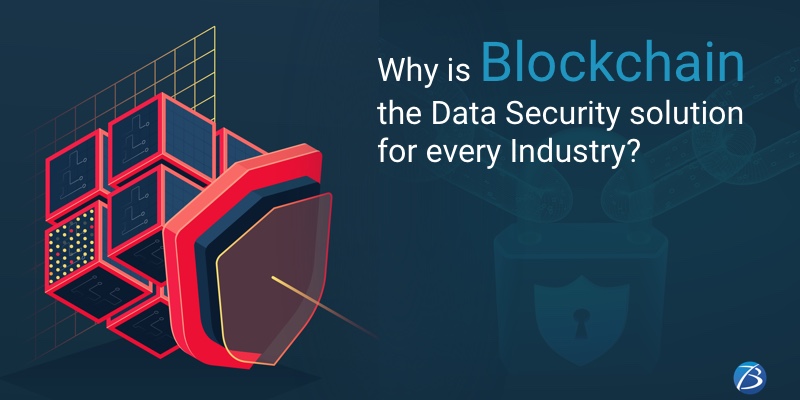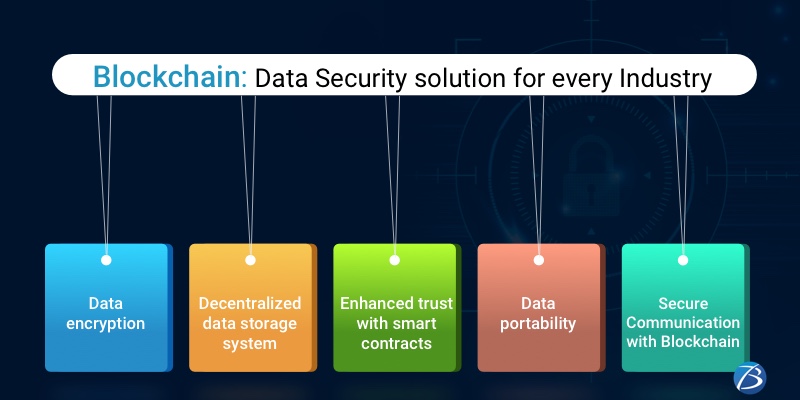How Blockchain and IoT are Improving the Food Supply Chain?
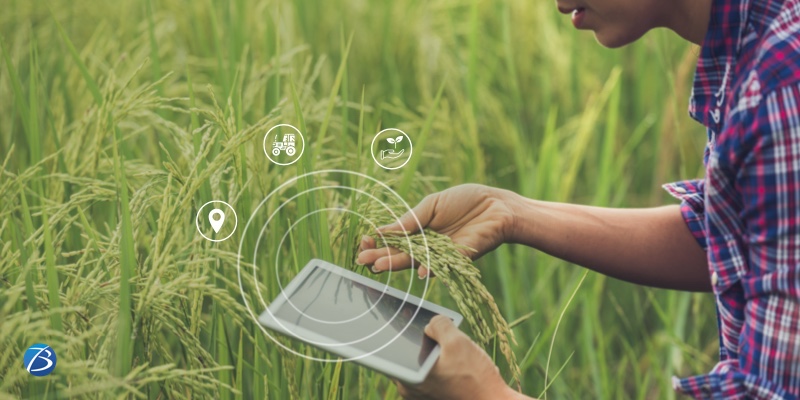
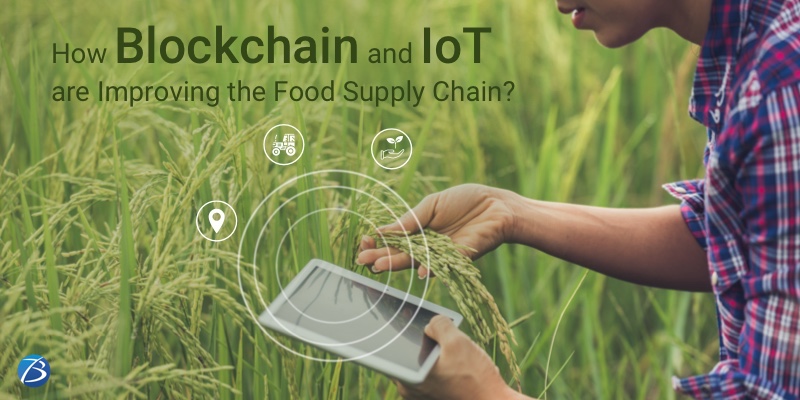
Blockchain and IoT are the state of the art technologies that have set the wheel of INDUSTRY 4.0 on a roll. They involve multiple stakeholders and bring digital transactions, big data storage, and cryptographic security to the table. These smart practices and technologies have the capability to transform the food industry to make it more robust and sustainable. This article will give you an insight on how Blockchain and IoT are impacting Food Supply Chain.
What is blockchain?
Do you remember Skywalker from Star Wars keeping a record of things using ‘force’? Blockchain is the skywalker of the digital age which can help you to keep the track of things using digital systems. Blockchain is used to store data or keep records using technology.
Distributed Ledger Technology (DLT) means a digital decentralised database that helps to keep check against data theft. Blockchain is a type of DLT, which is a digital system for recording digital transactions. Its super strength lies in the fact that it can keep a tap on transactions and related data in multiple places at the same time. Can you imagine a huge chain of boxes linked together? Blockchain stores data in blocks that are digitally chained together and computers in this system are connected to a peer-to-peer network instead of a central computer like in traditional databases.
So, Blockchain technology is preferred over conventional databases in how it stores and manages information. These days, the whole world is getting digitized and so cyber security is the new basic need of industries and people. Blockchain is designed to make it impossible to hack the system making it secure and immutable. Hence, Blockchain technology is getting more traction and it is being wide used by many businesses.
How blockchain is used by food supply companies?
Three years ago the world experienced something unimaginable. Many businessmen skipped their heartbeat and many companies left to face the inevitable. The COVID-19 disaster cut opened the existing fault lines in the supply chain. The nature of the food industry is such that it is vulnerable to timing, delivery and safety. If the food supply chain perishes, the whole human race perishes. Hence, to conquer such uncertainty, blockchain offers an amazing solution. Let’s take a deeper dive into the Blockchain and understand the impact it’s having on the food industry.
- Blockchain ensures food safety. It can trace the food supplies from suppliers to buyers.
- While of course, among the other benefits, balancing market pricing is one of them. It establishes a ledger in the network and adds value to the current market.
- Blockchain is thoroughgoing. It helps by giving information about the entire value chain.
- It is effortlessly easy to use for the participants. Access the records in your comfort without any hustle. It may help to give you an idea about the universal and total outline of supply and demand.
- The blockchain apps for trades might upscale traditional commodity trading and hedging as well.
- If transparency is something you are looking for in a business, then Blockchain is a big YES for you. It enables verified transactions to be safely shared with all players in the supply chain, creating a marketplace with immense transparency.
Food supply chain companies use blockchain to track and trace items as they move through the supply chain. The government and various industries are using blockchain as the basis for smart contracts and other mechanisms for transferring and protecting intellectual property rights. Many industries that want to revolutionise their business strategies are now exploring blockchain-based applications as a secure and cost-effective way to create and manage a distributed database and maintain records for digital transactions of all types.
Hence, blockchain is being considered as a viable solution for securely tracking and sharing data between multiple business entities. Along with blockchain, a few other technologies like the Internet of Things (IoT) is also contributing to the blossoming future of businesses.
What is the Internet of Things?
Do you want to turn on and turn off the car in your garage without moving a foot and enjoying soda sitting on your sofa or do you want to save energy and switch off lights in your house? You can do all this without moving a foot and with just your single command with IoT.
Internet of Things refers to the combined network of linked devices and the technology that facilitates communication between devices and the cloud, as well as between the devices themselves. With the 21st century, the internet went on to reach everywhere. But more soothing than this was the advent of super-cheap computer chips and high bandwidth telecommunication which enabled billions of devices to connect to the internet. So from smaller devices like the table lamp to the bigger devices and things like cars, houses can use sensors to collect and store data and respond intelligently to users.
The Internet of Things incorporates everyday “things” with the internet. This has offered tremendous space for food supply chains to explore the area. The major drawback of the food supply chain was the irregular interconnection. IoT, thus indulging the interconnection between the various stakeholders of the supply chain helps to create an effortless and effective system.
As computing devices also underwent a revolution, they were reduced in size, these chips also became smaller, faster, and smarter over time.
Multiple benefits that IoT offers to the Food supply chain industry
So, let’s look deeper into IoT and the impacts it is having on the food industry
- It is cost-effective
- It soothes the process
- It makes tracking easier
- Readjustment with the global trends
- It can spread awareness and make monitoring serene.
- It can upscale the management of warehouses.
The cost of syncing computer devices with other objects has now been reduced handsomely. It has opened a new avenue for the food supply chain industry as B2B businesses always look to reduce the investment and increase profits. Though costs of IoT are allied, they effectively increase the main course and profits.
The food industry can’t endure staying behind. Globally, the population has been booming and so the onus lies on the supply chain to balance the needs of the human race. The food industry, hence, has revolutionised itself with a focus on pouring our storehouses, businesses, and offices with IoT devices. These smart devices can automatically transmit and record data to and from the Internet. Which eases the surveillance burden of the contractors.
The Internet of Things is everywhere. From manufacturer to retailer’s market to consumers while they shop, IoT devices can help to track the food supply movement. In the food supply chain, data is used by companies to track and trace products movements, analyze trends of their usage, easily communicate with people, automated machinery, and many more endless uses. So IoT makes the hustle free tracking of every stakeholder of the food supply chain.
COVID 19 had skipped two good years from the lives of the people. Globalisation has reduced the boundaries and borders and brought the world closer to each other. But when disasters like COVID struck the world, it was nearly impossible for the world to avoid them. But with the IoT, these kinds of readjustments are now way much easier.
The IoT is made up of sensor-embedded devices that captures the data and then transmits volumes of data from all types of IoT devices to the Internet, machines, people, and beyond. So, by analysing the trends at any end of the supply chain, we can easily readjust the whole food supply chain cycle.
While the IoT offers novel uses in the food industry, it can replace the long used tracking practice of logistics. Gone are the days when it was difficult to keep track of the ordered products. Now companies can use smart labels to give consumers full visibility into their supply chain. Customers can simply scan the package’s QR code, and learn if the package has left the factory or when, and how each ingredient made its way into that particular product. This way, IoT is helping the companies to be aware of the purity and elevating food safety practices.
It is not just the food production, but the storage in the warehouses is also a huge task for food manufacturers. Manufacturers install sensors for timely monitoring, quality control, leveraging real-time analytics to streamline production, measure worker productivity, and calculate labour costs. IoT with real-time maintenance capabilities could automatically fix its own malfunctions before they occur.
According to the Food Industry Executive Report, researchers predict that more than 34 billion Internet-connected devices will be in use by 2020, 40 percent of which will be used for business-related purposes. In the supply chain, the IoT enables real-time monitoring, transparency, huge data collection, and more effective and automated problem solving than conventional methods. To prepare for the future of demands, stakeholders of the supply chain must indulge the practice of IoT and effectively start to include the smart practices in the business.
The pantheon of the INDUSTRY 4.0 is being led by smart practices like the blockchain and IoT and we at Biz4solutions are working hard to upcycle your business dreams. We bring not just the conventional solution but also offer smart ways to upgrade your business and increase the productivity of your business. It’s your time to say YES! Allow us to help you with Digital transformation, robotic process automation, IoT, blockchain app development, cloud solution, mobile apps and many more state-of-the-art services. Drop your email in the comment box and relax, our experts will get in touch with you shortly.

